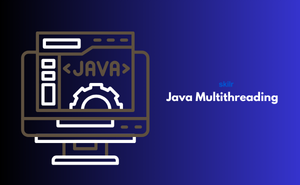👇 CELEBRATE CLOUD SECURITY DAY 👇
00
HOURS
00
MINUTES
00
SECONDS

The Certificate in Java Multithreading is designed to provide individuals with the knowledge and skills necessary to develop concurrent and multithreaded applications using Java. This certification program covers various aspects of multithreading, including thread creation, synchronization, communication, and concurrency control. Candidates will learn how to design and implement multithreaded applications that can effectively utilize the computing resources of modern processors.
Skills Covered:
Candidates are expected to have a basic understanding of the Java programming language and object-oriented programming concepts.
Why is Java Multithreading important?
Who should take the Java Multithreading Exam?
Java Multithreading Certification Course Outline
Multithreading Concepts
Thread Creation and Management
Synchronization Mechanisms
Inter-thread Communication
Concurrency Control Techniques
Multithreaded Application Design and Development
Industry-endorsed certificates to strengthen your career profile.
Start learning immediately with digital materials, no delays.
Practice until you’re fully confident, at no additional charge.
Study anytime, anywhere, on laptop, tablet, or smartphone.
Courses and practice exams developed by qualified professionals.
Support available round the clock whenever you need help.
Easy-to-follow content with practice exams and assessments.
Join a global community of professionals advancing their skills.
The course duration depends on your learning pace. On average, it takes 4–6 weeks to complete if you dedicate 5–7 hours per week.
This course focuses on building practical skills. However, it complements Java certifications like:
Yes, this course uses Java 15 or later, ensuring that the concepts and tools you learn are relevant and up to date.
Yes, the course includes hands-on projects such as:
These projects allow you to apply what you’ve learned and gain practical experience.
This course equips you with specialized skills in multithreading and parallel programming, which are highly sought-after in the software development industry. These skills can:
Multithreading and parallel programming are used in various industries, including:
Yes, while the course focuses on Java, the concepts of multithreading, synchronization, and parallel programming are applicable to other programming languages like Python, C++, and C#. The fundamental principles remain the same across platforms.
Yes, this course is perfect for beginners who have a basic understanding of Java and Object-Oriented Programming (OOP). It starts with foundational concepts and gradually progresses to advanced topics. Even if you are new to multithreading, this course will guide you step by step.
This course is focused exclusively on multithreading and parallel programming, which are advanced topics not typically covered in depth in standard Java courses. It also includes:
Learning multithreading and parallel programming opens up various career paths in the software development industry. Some of the popular roles include:
These roles often involve creating high-performance applications, optimizing systems, and managing scalable architectures.
The salary depends on the role and location, but here’s a general idea:
Professionals with expertise in multithreading and performance optimization tend to earn higher salaries due to the specialized nature of these skills.
The only requirements are:
All necessary coding resources will be provided during the course.